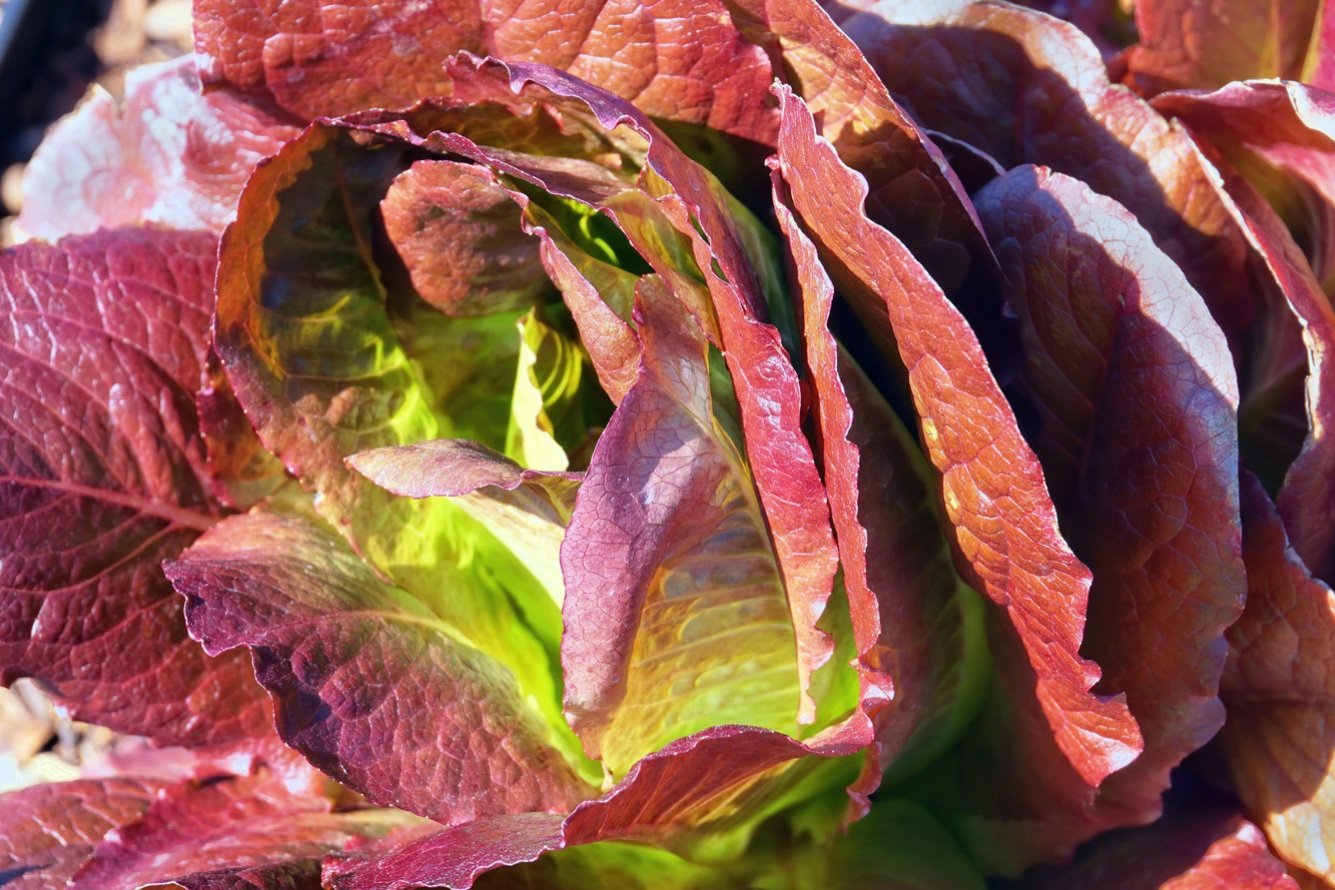The Lone Survivor - A Single Red Winter Romaine
That’s what happens when you plant your cool season garden and then the temperature drops to 7 degrees in December . . . in the south. Seriously?
I’ve planted this variety of lettuce for several years now and it’s one of my favorites. It’s got a sweet, buttery flavor and is super pretty with a green center surrounded by bronze-red leaves. It’s real name is Rouge d’Hiver and it’s an organic, French heirloom romaine lettuce from the 1800s. I get my seeds from Botanical Interests, and sow them directly into the garden in the fall for a cool season harvest. This lettuce takes between 20 to 65 days to mature and does best in cool weather. Note: I said cool - not frozen until there’s nothing left!
This is what Mr. Lone Survivor should have looked like - perky, happy and surrounded by all his friends. Unfortunately for him (and me), nothing else in my lettuce garden bed made it.
Lettuces belong to the flowering Asteraceae (say that 3 times fast) plant family, along with other flowering plants like sunflowers, dahlias, daisies and chamomile. This is one of the largest plant families in the world, with species found everywhere except Antarctica. Who knew?
This red winter romaine will grow about 6 to 10 inches tall and 8 to 10 inches wide. It’s actually pretty compact so it’s perfect for small space gardens. Harvest your romaine in the morning, by cutting the leaves off at the ground. Start with the outer (i.e., older) leaves first, but be sure to leave at least half the plant intact so it can keep growing. At the end of the season, harvest the whole plant. Just grab the top and hack it off at the base.
It’s time for some culinary nutrition! Did you know that romaine lettuce is a natural anti-inflammatory? It contains protein, calcium and fiber, as well as Vitamins C, K and A, which help defend cells against negative free radicals. Romaine lettuce also contains calcium, phosphorous, magnesium and potassium. All of these vitamins, minerals and antioxidants help to build healthy bones and strong muscles, improve digestion and lower blood pressure.
And look how the addition of some red romaine dresses up this salad. It’s very mild flavor and super crunch make its addition a no-brainer. And one way to eliminate any concerns about possible bacterial contamination (we’ve all heard the E. coli and salmonella recalls) is to grow it yourself!
If you want to read more about romaine and other lettuces with really beneficial therapeutic properties that you can easily grow in a small space garden, download my guide to 24 Inflammation Fighting Foods You Can’t Live Without - it’s worth it!





